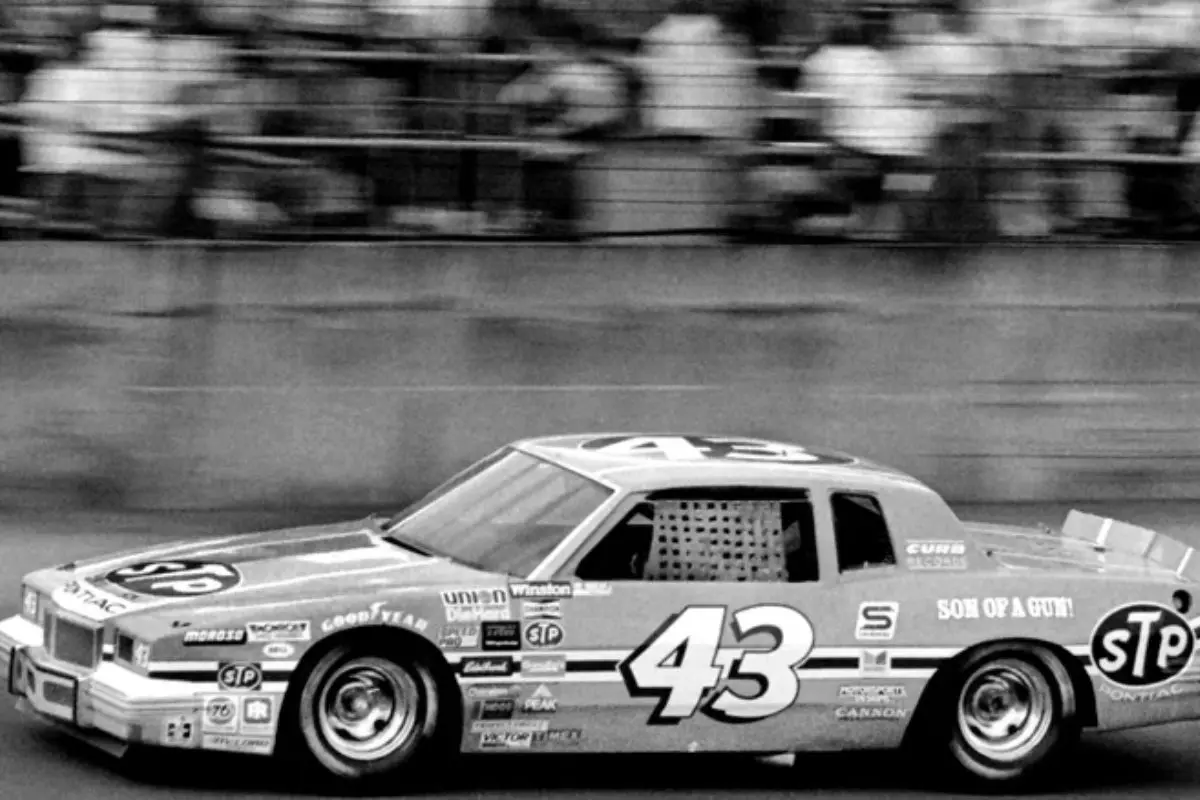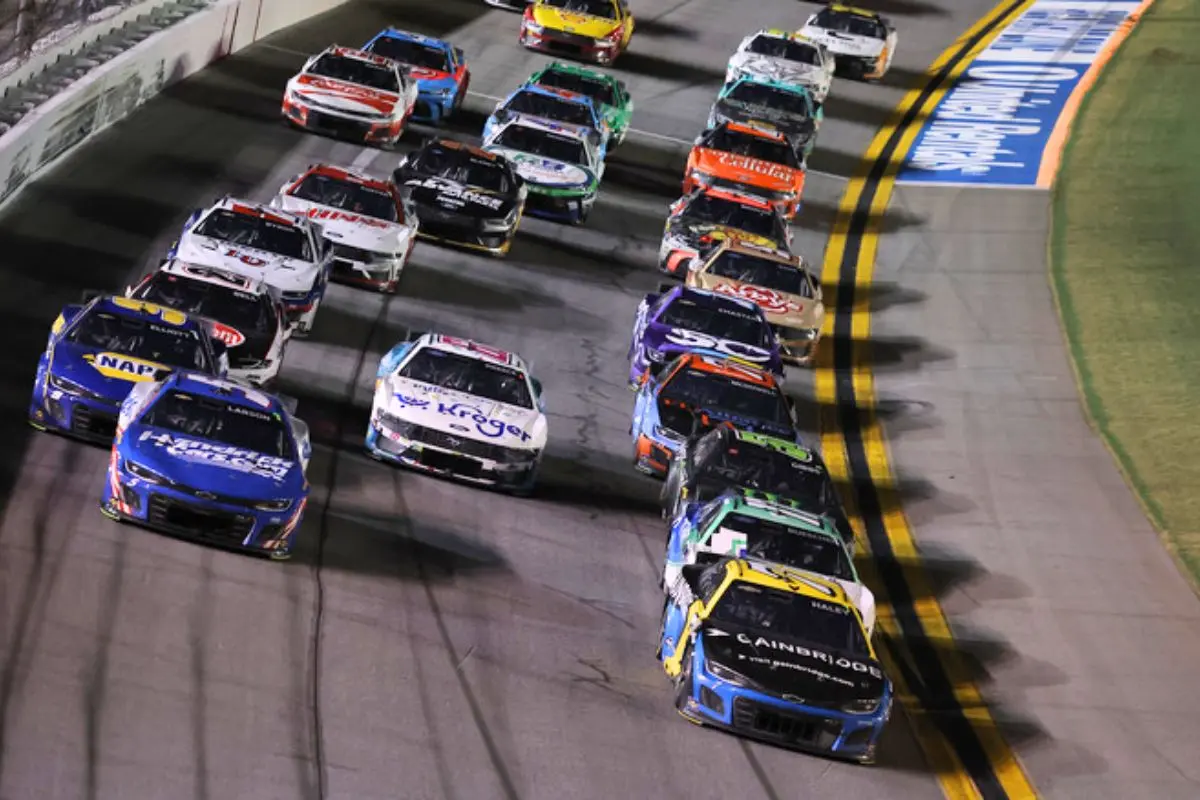Before the introduction of restrictor plates in 1988, NASCAR cars reached astonishing speeds, typified by Bill Elliott‘s record-setting 212.809 mph lap in 1987. This era of unrestrained velocity demonstrated technological skill, yet also foreshadowed perilous consequences. The Ford Thunderbird, powered by a formidable 351-cubic-inch V8 engine delivering 625 horsepower, exemplified these advancements. However, escalating speeds posed grave safety threats, prompting NASCAR to reconsider the limits of speed on iconic tracks like Talladega and Daytona.
Key Highlights
- NASCAR cars reached speeds of over 210 mph before restrictor plates were introduced.
- Bill Elliott set a record lap speed of 212.809 mph in 1987.
- The Ford Thunderbird’s V8 engine contributed to achieving these high speeds.
- Bobby Allison’s crash at over 210 mph highlighted safety concerns.
- High-speed risks prompted NASCAR to introduce restrictor plates in 1988.
NASCAR’s Speed Problem in the 1980s
During the 1980s, NASCAR faced a considerable challenge as escalating speeds began to push the boundaries of both technology and safety.
As engines grew more powerful, the allure of speed captivated audiences, yet it also raised alarms about driver welfare. Bill Elliott’s record-setting 212.809 mph lap at Talladega in 1987 illustrated this era’s technological zenith.
His Ford Thunderbird, propelled by a formidable 351-cubic-inch V8 engine generating 625 horsepower, exemplified the engineering skill of the time.
However, this relentless pursuit of velocity posed considerable risks. The combination of aerodynamic advancements and raw power threatened track safety, prompting debates within NASCAR about the sustainability of such speeds.
The sport stood at a crossroads, grappling with the balance between spectacle and safety.
Bobby Allison’s Crash and NASCAR’s Breaking Point
The escalating speeds of the 1980s reached a dramatic turning point with a harrowing incident that highlighted the precarious balance NASCAR was attempting to maintain.
Bobby Allison’s car, while racing at over 210 mph, suffered a catastrophic blowout, launching it into the catch fence in a terrifying display of velocity and vulnerability. This crash, which occurred just days after the event, resonated deeply within the racing community, illustrating the inherent risks of unchecked speed.
Spectators faced imminent peril from flying debris, emphasizing the urgent need for NASCAR to reassess its safety protocols. As Allison miraculously emerged unscathed, officials were left grappling with the sobering realization that the sport’s pursuit of speed had overstepped its safety limits, necessitating immediate intervention.

The Birth of Restrictor Plates
Introduced as an essential response to escalating dangers, restrictor plates emerged in 1988 as NASCAR‘s definitive measure to tame the unchecked speed that had characterized the sport’s thrilling yet perilous past.
This innovation, a simple square of aluminum with four drilled holes, was tactically positioned between the carburetor and intake manifold. Its purpose was clear: to limit airflow and consequently reduce horsepower.
By curbing speeds at high-velocity tracks like Talladega and Daytona by roughly 10 mph, it guaranteed cars clustered closer together, mitigating the risk of catastrophic single-car accidents.
Though some critics argued that this led to the chaos of pack racing, the restrictor plate was an unavoidable necessity.
The blistering speeds of Elliott’s ’87 Thunderbird highlighted the urgent need for intervention.
Rusty Wallace’s Unrestricted Run in 2004
In the domain of NASCAR, speed is both a tantalizing allure and a dangerous adversary. Rusty Wallace’s 2004 unrestricted run at Talladega exemplified this thrill.
During a private test orchestrated by NASCAR sponsor Nextel, Wallace was tasked with evaluating radio communications at heightened velocities. Initially, his Penske Racing Dodge hit 199 mph, hindered by incorrect restrictor plates.
Relishing the challenge, Wallace convinced his team to remove the plate entirely. The ensuing lap saw the car surge to an astounding 241 mph, as Wallace recalled, although others cited 228 mph.
Regardless, the feat shattered Bill Elliott’s 1987 benchmark, revealing the raw potential of NASCAR machines unfettered by restrictor plates, though vibrations soon shredded the tires, emphasizing speed’s perilous edge.

Could Modern NASCAR Cars Go Even Faster?
What if the constraints of modern NASCAR were peeled away, releasing the full potential of today’s engineering marvels? The possibilities are staggering.
With advancements in technology, today’s naturally aspirated engines can generate over 850 horsepower, a substantial leap from Elliott’s 625-hp Thunderbird. This prompts three critical considerations:
- Material Advancements: Modern materials offer unmatched strength and lightweight properties, enhancing speed and efficiency.
- Precision Tolerances: Improved engineering tolerances allow for ideal engine performance, minimizing energy loss.
- Innovative Design: Cutting-edge aerodynamics could drastically reduce drag, maximizing velocity.
Andrew Randolph of Earnhardt Childress Racing highlights the latent power in these vehicles, igniting imagination and trepidation similarly.
While fans dream of liberated speeds, officials breathe a sigh of relief at the maintained status quo.

News in Brief: How Fast Did NASCAR Cars Really Go Before Restrictor Plates
Before the restrictor plates, NASCAR cars pushed the boundaries of speed, exemplified by Bill Elliott’s 212.809 mph record. However, the thrilling velocity came with perilous risks, as seen in Bobby Allison’s harrowing crash. In response, NASCAR introduced restrictor plates to balance speed with safety. The 2004 unrestricted run by Rusty Wallace hinted at the untapped potential of modern cars. Yet, the evolution of NASCAR highlights the delicate dance between engineering skill and ensuring driver safety.
ALSO READ: 2025 World Wide Technology Raceway: Full NASCAR Weekend Guide
